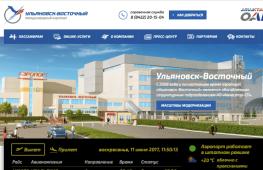Detinets ancient city 6 letters. Detinets: what is it, what significance did it have in the life of the city and how has it survived to this day? Civil appointment of a detin
Detinets in Rus'
The first letter is "k"
Second letter "r"
Third letter "e"
The last letter of the letter is "b"
Answer for the question "Detinets in Rus'", 6 letters:
Kremlin
Alternative crossword questions for the word Kremlin
Mountain on the northern outskirts of Tibet, discovered by Przhevalsky
Main building of Russia
In V.I. Dahl’s dictionary this word is given the following definition: “ The best part reserve, strong and large timber", but usually this word is used to describe a structure that in ancient times was obviously built from just such timber
Soviet opponent of the White House
Presidential apartments in Russia
City within a city
Where is the residence of the President of Russia?
Definition of the word Kremlin in dictionaries
Great Soviet Encyclopedia
The meaning of the word in the dictionary Great Soviet Encyclopedia
the central fortified part of the Russian feudal city. It was first mentioned in the chronicle in 1331 (“kremnik”). Other names were also used: “detinets” (until the 14th century), “city”, “city” (until the 16th-17th centuries). K. was usually located in a high place, often near the shore...
New explanatory dictionary of the Russian language, T. F. Efremova.
The meaning of the word in the dictionary New explanatory dictionary of the Russian language, T. F. Efremova.
m. Moscow Kremlin as the seat of the head of state.
Examples of the use of the word Kremlin in literature.
Go down for a while Kremlin Sverdlov, Avanesov, Demyan Bedny and a number of other comrades moved.
Another day or two passed, Avanesov called me again and presented me with a decree from the Cheka: Kaplan - to be shot, the sentence to be carried out by the commandant Kremlin Malkov.
Left face to face with me in his office, Avanesov spoke: “We must decisively strengthen security.” Kremlin, especially during the day.
That’s why Avanesov warned me about the need to strengthen security. Kremlin, increase the vigilance of sentries.
Two weeks before Beria's interrogation, I was summoned to Kremlin with Stamenov’s intelligence file, where I reported the details of our conversation to Khrushchev, Bulganin, Molotov and Malenkov.
It is not difficult to answer the question of what a detynets is. The central, most fortified part of the city in ancient Rus', later called the Kremlin.
The meaning of the word child
Appearing in chronicles from 1097, the word was widely used for several centuries. In 1317, when, when describing construction in Tver, a new name for the city center was first noted - the Kremlin, which quickly became fashionable, the use and understanding of what a detinets is began to disappear from use and disappeared completely.
The defensive significance of the detinets
The Old Russian state, located on the route “from the Varangians to the Greeks,” had an attractive territory for many external invaders. Internal disagreements were also resolved exclusively by military methods. In societies of that period, the presence of warriors and the defense of the settlement were truly matters of survival.
The most inaccessible place for the enemy, located on the top of a hill, surrounded by ditches and wooden forts, is Detinets. could hold the defense for a long time, hiding the population of the city behind the walls, there is no doubt.
From childhood, boys were taught the basics of military affairs and the use of weapons, regardless of their occupation in the future. The whole world stood up to defend the settlement, and later the city.
Civil appointment of a detin
The northern neighbors called the Russian lands "Gardariki", that is, a country with many fortified cities, with its center in Veliky Novgorod.
And there really were a lot of cities. Fragmented into Rus', there was no unified government, being constantly in a state of internecine wars. The princes and their numerous descendants, having received lands as reigns, built their own cities for residence and fortified cities to protect their inheritances.
First of all, the detinets were built. Determination of its location was dictated natural conditions. High place and the river are the main requirements for its appearance. Being a stronghold of princely power, it was populated primarily by noble and wealthy townspeople. Princes, boyars and clergy built their chambers and palaces here, and they were served by numerous servants.
But the city was open to both artisans and merchants who flocked here in search of work and protection. Trade took place mainly along the river. Farmers settled on the outskirts or outside the city wall, closer to their plots.
The city grew around, occupying the entire area of the fortress, and then going beyond its borders. Detinets became the center of city life, in all its manifestations. What's happened great importance acquired a location of power and wealth, it is not surprising. Having your own streets and retail space, it was a city within a city.
The spiritual meaning of the child
The church in Dytinets was built simultaneously with the walls. With God's help, the townspeople built their city and defended it. As the settlement grew, many other churches were built around Detinets, but the main city temple remained the one inside the fortress walls.

The highest clergy of the city settled next to it, and no expense was spared on decorating such churches. It was here that the tallest bell tower was located, which also served as a watchtower. And they came here for a prayer service in anticipation of an enemy attack.
Novgorod child
The Kremlin is the oldest Kremlin in Russia that can be visited today. He saved not only the walls, towers and buildings, which are the most valuable monuments, but also his original name.

Chronicles say that in 1044, Prince Vladimir Yaroslavovich (son of Yaroslav the Wise) began to build a detinets on the Volkhov River. Nobody could have imagined that such a structure would stand in one place for almost a thousand years.
A year later, construction began on the main Novgorod cathedral - the St. Sophia Church, which was consecrated seven years later. The stone church, painted half a century after construction, has preserved a small part of the frescoes to this day. The main part of the painting is from the century before last. Nowadays it is the Cathedral Church of the Novgorod Metropolis.
The wooden child burned and was restored again, but years and troubles spared it. Today we can see stone walls 8-15 meters high; 9 of 12 towers; Vladychnaya (Faceted) Chamber of the 15th century; other ancient monuments.
The central place on the Kremlin square is occupied by the monument to the Millennium of Rus', erected in 1862.

The buildings on the territory have been occupied by the Novgorod Museum-Reserve since 1865, many of whose displays and exhibitions are open to the public. Today there is a regional scientific library, a music school, and a philharmonic society. The townspeople are confident that the best place in Novgorod - this is their child, that such proximity to city cultural institutions contributes to the preservation of historical value and makes it at the same time accessible to people.
Origin of the word "detinets"
Having found out what a detinets is, where the preserved ancient monument in Russia, and what place it occupied and occupies in the lives of townspeople a thousand years ago and today, I would like to understand the origin of the word itself.

According to Wikipedia, there are several opinions on this matter:
1. Metropolitan Evgeniy (Bolkhovitinov) in 1808 suggested that the word “children”, who were hidden behind walls during an attack by enemies, has the same root.
2. M. Kh. Aleshkovsky believed that the princely warriors (youths, children), living in the fortress, gave it this name. Experts refute this interpretation, arguing that only the clergy lived in the Novgorod Detinets, the princes lived nearby, in Gorodishche.
3. F. Laskovsky is sure that the word comes from the verb “child”. In case of danger, they hid behind the walls and “dispossessed” everything of value, from treasures to children.
4. According to Academician Yanin, the origin of the word is associated with gatherings on the territory of grandfathers-elders who decide important issues.
One day may not be enough to get to know the Novgorod Detinets. To visit nearby monasteries, city streets and attractions that Veliky Novgorod is rich in, you need much more time.
see also
Origin of the word
Most researchers associate its origin with the word children. So, for example, Evgeniy (Bolkhovitinov) in 1808 expressed the version that during enemy invasions, children (in order to be protected) were taken to the fortress. Hence the name - “detinets”. Archaeologist of the Novgorod Detinets M.X. Aleshkovsky believed that the fortress was called Detinets because princely warriors, called youths, children's. But the princes never lived in the Novgorod Detinets itself; here was the residence of the Novgorod rulers. The princes lived on Gorodishche or, perhaps, not far beyond Volkhov - on Yaroslav’s Court.
F. Laskovsky suggests the origin of the word from the verb children(to place, place), based on the fact that the fortress was the place where, in case of danger, the most important things were placed: church shrines, property, wives and children. According to Academician V.L. Yanin, the name “Detinets” may be associated with the oldest people - grandfathers-elders who gathered there to resolve various issues. As proof, the academician cites Dedynets courtyard Kraków Fortress in Wawel, which performed the same function. There is also a version of the origin of the word from Daylight hail(from day-, which means inside) .
Notes
Links
- Detinets - article in the Russian Humanitarian Encyclopedic Dictionary
Wikimedia Foundation. 2010.
Synonyms:- Cuckoo (film)
- Digora
See what “Detinets” is in other dictionaries:
BABY- DETINETS, the name of the internal fortification in a Russian medieval city around the residence of a prince or bishop. From the 14th century replaced by the term Kremlin. Source: Encyclopedia Fatherland 1) the same as the day’s hail, 2) detinets, or kremnik, the same as ... ... Russian history
child- Kremlin, center, citadel, krom Dictionary of Russian synonyms. detinets noun, number of synonyms: 4 kremlin (5) chrome ... Synonym dictionary
BABY- the name of the internal fortification in a Russian medieval city around the residence of a prince or bishop. From the 14th century replaced by the term Kremlin... Big Encyclopedic Dictionary
BABY- a Kremlin, a fortress, a citadel in a medieval Russian city, its central part, fortified with a wooden or stone fence, where the prince’s warriors usually lived. In the XIV century. term "D." is almost universally replaced by the word “Kremlin”, with the exception of... ... Legal encyclopedia
Detinets- name topographically isolated fortified part of other Russian. city (inner fortress). It was located on a hill (Kremlin, Upper Castle, Castle Hill) in contrast to Podol, the lower part of the city, D. administrative center(princely palaces,... ... Russian humanitarian encyclopedic dictionary
Detinets- or Dneshny Grad in ancient Russian fortification (XII-XIII centuries) the citadel, generally the internal stone or wooden fence of a fortified city (the ancient word dne meant internal) was called Dneshny Grad, and in Nestorova and Lavrentievskaya... ... Encyclopedic Dictionary F.A. Brockhaus and I.A. Ephron
child- ntsa; m. East. The central fortified part of the ancient Russian city, surrounded by walls. * * * detinets is the name of an internal fortification in a Russian medieval city around the residence of a prince or bishop. Since the 14th century replaced by the term "Kremlin". * * *… … encyclopedic Dictionary
Detinets Construction dictionary
Detinets- an internal fortification in a medieval Russian city, covering the princely residence and courtyard of the church ruler with walls and towers. The term detinets was used in chronicles until the 14th century, later replaced by the name Kremlin or existing... ... Architectural Dictionary
child- I child II. childhood illness, epilepsy, dial. paralysis. Taboo expression; see Zelenin, Taboo 2, 82. From a child. II detinets ntsa I. fortification, stronghold, inner courtyard of the fortress (as opposed to a stockade fort, external fortification), dial. Also … Etymological Dictionary of the Russian Language by Max Vasmer



